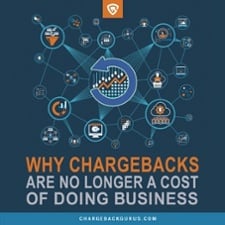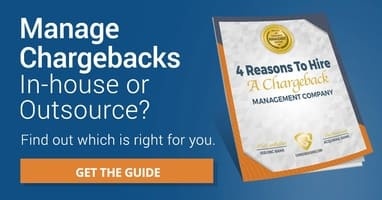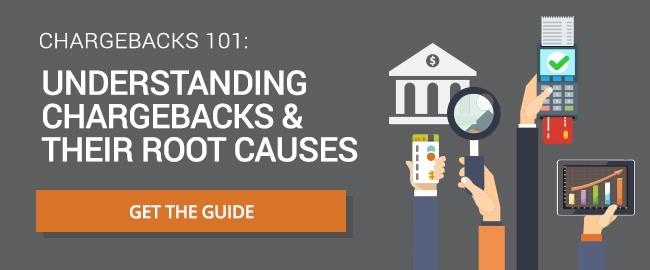Decreasing Chargebacks - 7 Best Practices
Table of Contents
- Make Your Policies Clear
- Identify Suspicious Transactions
- Provide Great Customer Support
- Employ Automatic Fraud Screening
- Customer Education
- Delay Billing
- Enlist Help From The Chargeback Gurus
- Frequently Asked Questions
Credit card charges get disputed every day. Millions of dollars are returned to consumers as the result of both legitimate and fraudulent disputes. However, there are ways to decrease chargebacks and save your business time and money.
 When a customer's dispute is determined by their bank to have merit, it’s known as a chargeback, and the funds are reimbursed to the customer’s account. This process isn't final, and merchants can respond to disputes and recover their revenue. However, even if the revenue is recovered, the merchant will still have to pay a chargeback fee, and representment takes time and effort.
When a customer's dispute is determined by their bank to have merit, it’s known as a chargeback, and the funds are reimbursed to the customer’s account. This process isn't final, and merchants can respond to disputes and recover their revenue. However, even if the revenue is recovered, the merchant will still have to pay a chargeback fee, and representment takes time and effort.
Therefore, the best way to fight chargebacks is by preventing them.
By decreasing chargebacks, you prevent the loss of time and money that results from disputes, and you can improve the reputation of your business at the same time.
Here are several of the most important ways to decrease chargebacks:
Make Your Policies Clear
One of the easiest ways to decrease the number of chargebacks your company has to process is to offer clear policies on refunds and order fulfillment.
To begin with, you’ll want a clear statement prominently displayed on your website that makes your security controls and tools to protect customers very explicit. This will discourage people who look for opportunities to make fraudulent transactions, and thereby help decrease chargebacks.
It’s also vital to provide order fulfillment information, preferably in a follow-up email that gets sent within one business day after a purchase is made. This will make your order processing time-frames clear to customers, and provide an order summary.
Be explicit about whether a purchased item is in stock or back ordered. All this information can be referenced when charges are disputed.
You should also include a statement that encourages cardholders to keep their own copy of the transaction on file. You’ll be able to compare the information on your records with their copy to determine whether a chargeback is legitimate.
Identify Suspicious Transactions
Suspicious transactions aren’t as difficult to recognize as you might think. There are several signs to watch for during any transaction, including:
The customer is hesitant to give out personal information. Sometimes customers are unwilling to provide simple information like a zip code, the spelling of a street name, or their surname. This could be a cautious customer, but too often it’s a sign of potential fraud.
The provided shipping address differs from the billing address. Though this could involve a gift being sent to a family member, you’ll want to flag transactions of this type, since the buyer could be using a stolen card to make an illicit purchase.
The order is made urgently. Any time a customer requests overnight delivery, you should proceed with caution. This could be an innocent, last-minute purchase, or it might be what’s commonly known as a “hit and run fraud scheme,” which occurs when a customer puts a rush on an order with a quick resale in mind.
The order is uncharacteristic or out of the ordinary. Random orders occur in which the customer doesn’t seem to care if the item is out of stock, or the person might make some other odd request, such as purchasing one of everything. This is another signal that the purchaser may be planning to resell.
If you notice any of these signs, commence your regular chargeback prevention procedures, or contact experts who can help you fight the charges.
Provide Great Customer Support
Sometimes preventing chargebacks is as simple as providing great customer service.
Hire enough customer service representatives to handle phone calls so you can respond to them quickly. Frustrated customers don’t like to be left on hold for too long.
Make sure your return and exchange policies are clear, and ideally, generous. Customers have certain expectations for being able to return items, and failing to meet those expectations can lead to frustrated customers filing chargebacks.
Since a chargeback can end up costing more than twice as much as the original transaction amount, a generous return policy is often the financially sound choice. in addition, chargebacks often result in negative word of mouth, whereas easy returns and exchanges can often result in positive word of mouth even if the customer wasn't happy with the product itself.
In addition, remember that low-quality products and services will always result in unhappy customers. Putting the customer first in both your product manufacturing and your personal dealings will help to reduce the number of claims.
Employ Automatic Fraud Screening
Be prepared to prevent fraud by setting up measures to screen for it. Current technology offers a variety of screening measures that can help merchants both to assess a risk and to handle fraud when it occurs.
Anti-fraud tools can use either a ruleset manually set up by the merchant to meet their needs or an algorithmically-generated set of standards to identify fraudulent transactions. According to the merchant's needs and desires, these tools can send certain transactions for manual review, or automatically reject transactions that send up too many red flags.
In addition to setting up customized screening tools yourself, you can also use a third-party service. Major credit cards such as Visa and MasterCard provide their own anti-fraud tools, or you can use an independent company that specializes in this area.
Customer Education
Friendly chargeback disputes can be handled simply by educating the customer. Remind the person why he or she made the purchase in the first place, and provide information on the value of your product.
One of the most common reasons for a chargeback is that the customer doesn't recognize a transaction listed on their account. To avoid these chargebacks, make sure your merchant descriptor clearly identifies your business. If you google your descriptor, does your website come up? If not, consider changing either your website or your descriptor. You should also include a customer service phone number so that customers who still don't recognize the transaction can call you for more information instead of filing a dispute.
Delay Billing
Major credit card companies and banks advise merchants to consider not billing a customer until after the order has shipped. In other words, pre-authorize the cardholder and then take payment out of the account only when the product is on its way.
 This has several benefits. For starters, you can show all involved parties your interest in ensuring the charge is validated. You might also be able to detect fraudulent charges before the payment goes through, which will make it easier to address the issue before it becomes a chargeback.
This has several benefits. For starters, you can show all involved parties your interest in ensuring the charge is validated. You might also be able to detect fraudulent charges before the payment goes through, which will make it easier to address the issue before it becomes a chargeback.
Finally, if the product ends up being out of stock at the time of purchase, you can let the customer know before billing the card.
Enlist Help from the Chargeback Gurus
For many companies, chargebacks are simply too tough a beast to fight effectively alone. That’s where Chargeback Gurus come in. Our many years of saving companies hundreds of thousands of dollars in chargeback fees has provided us with a wealth of experience in how to decrease chargebacks and recover revenue with strategies customized for each individual business.
FAQ
Can you prevent a chargeback?
What happens if you have too many chargebacks?
Thanks for following the Chargeback Gurus blog. Feel free to submit topic suggestions, questions or requests for advice to: win@chargebackgurus.com






